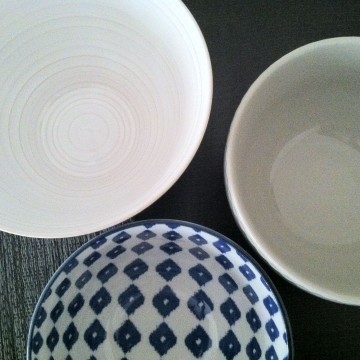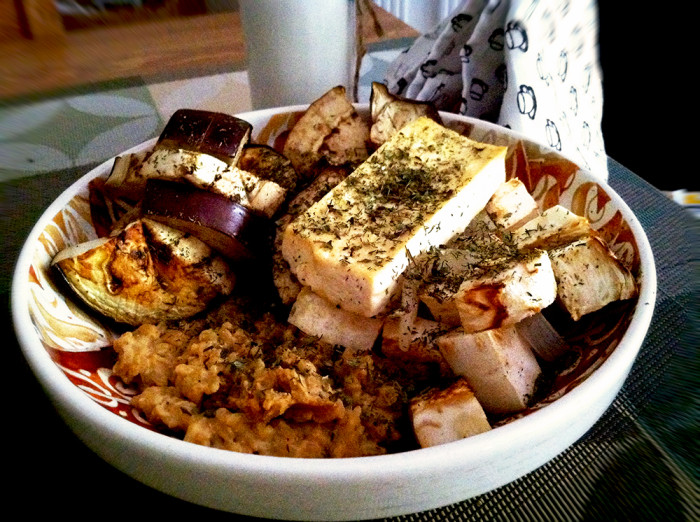When my cousin generously donated silverware to my first apartment, I knew I’d never, ever need the full service for ten. And yet I panicked about just one thing: the spoons. Would there be enough? Nearly everything I ate was out of a bowl, and I could quickly see that between meals and cooking the spoons would go quickly.
Bowls are just one of my odd-ball fetishes. They’re not only in the kitchen (multiple sets, naturally, of differing sizes), but I also like to keep them around for any old random thing. I have bowls to hold rings, peppermints, paper clips, chapsticks, or sometimes nothing at all.
Bowls, it turns out, are also the best way to minimalize one’s diet. There’s a reason that so many comfort foods–ice cream, pasta, soup, salty snacks–come in bowls, and thus positive associations. Bowls are meant to be filled and scraped clean with spoon; they can be piled high and mushed around if you like, or kept in nice neat layers or sections. For some reason, you can’t say the same of a plate, where it’s harder to pick up tiny pieces and where people sometimes get too caught up with presentation to consider the content.
A lot of restaurants now feature “bowl” options prominently on menus, and while they might seem novel they’re really not. It can make a person dizzy to keep up with all the food trends and scientific studies that declare what we should and should not eat for maximum health, but the consistent message is that whole, natural foods are best. “Bowls” typically consist of such ingredients, and putting them together in one place makes it a no-brainer to get the proper nutrition at any meal.
There are just three main parts to any good bowl: carbohydrates, protein, and fat. These are also the building blocks for a balanced diet. When I took to planning a minimalist, bowl-based diet, I thought of different options for each group, prepared them in small batches, and was able to mix-and-match for different meals throughout the week. This is how to break down a bowl:
Carbohydrate: Whole grains are a good base and can be stored for a relatively long time in the refrigerator. But this food group also includes vegetables and fruit, which should be added to your bowl in a higher proportion than your grains. Vegetables can be steamed or roasted, and while I think of fruits generally as part of a breakfast or snack bowl they can also be added to lunch and dinner.
Protein: Tons of vegan options exist for protein, including legumes (which also add good, complex carbs). Don’t forget non-dairy milk as a breakfast bowl protein.
Fat: Think dressings or as separate toppings, such as avocado, nuts or seeds. A simple drizzle of olive oil over any bowl can add light flavor and won’t compete with other spices you might add to your bowl.
I made this bowl by roasting chopped eggplant, celery root, and onion, along with slices of tofu, in the oven at 450 degrees for 25 minutes. Separately, I combined brown rice with a simple miso dressing. Once the bowl was assembled, I seasoned it all with some fresh pepper, basil, and dill. I could have added the dressing and/or spices at any stage during the cooking process, but I decided to make the individual ingredients as plain as possible to allow for different flavor combos later on. It was a quick and delicious meal that I’ll be able to revive throughout the week.
Also on Minimalist Challenge: What I Wear
__
Photo: Jennifer Kurdyla



